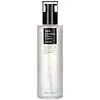What's inside
What's inside
 Key Ingredients
Key Ingredients

 Benefits
Benefits

 Concerns
Concerns

 Ingredients Side-by-side
Ingredients Side-by-side

Water
Skin ConditioningCellulose Acetate
Glycolic Acid
BufferingSodium Hydroxide
BufferingPolyacrylate Crosspolymer-6
Emulsion StabilisingCocamidopropyl Betaine
CleansingCitric Acid
BufferingSalix Nigra Bark Extract
Skin ProtectingMandelic Acid
AntimicrobialLactobacillus/Punica Granatum Fruit Ferment Extract
Skin ConditioningHibiscus Sabdariffa Flower Extract
Skin ConditioningLeuconostoc/Radish Root Ferment Filtrate
AntimicrobialMaltodextrin
AbsorbentLactobacillus
Skin ConditioningSodium Hyaluronate
HumectantPanthenol
Skin ConditioningAlpha-Glucan Oligosaccharide
CleansingSodium Citrate
BufferingPolymnia Sonchifolia Root Juice
Skin ConditioningAloe Barbadensis Leaf Extract
EmollientPhenoxyethanol
PreservativeXanthan Gum
EmulsifyingDisodium EDTA
Ethylhexylglycerin
Skin ConditioningMenthyl Lactate
MaskingGlycerin
HumectantBenzoic Acid
MaskingSodium Chloride
MaskingSaccharide Isomerate
HumectantParfum
Masking1,2-Hexanediol
Skin ConditioningCaprylyl Glycol
EmollientWater, Cellulose Acetate, Glycolic Acid, Sodium Hydroxide, Polyacrylate Crosspolymer-6, Cocamidopropyl Betaine, Citric Acid, Salix Nigra Bark Extract, Mandelic Acid, Lactobacillus/Punica Granatum Fruit Ferment Extract, Hibiscus Sabdariffa Flower Extract, Leuconostoc/Radish Root Ferment Filtrate, Maltodextrin, Lactobacillus, Sodium Hyaluronate, Panthenol, Alpha-Glucan Oligosaccharide, Sodium Citrate, Polymnia Sonchifolia Root Juice, Aloe Barbadensis Leaf Extract, Phenoxyethanol, Xanthan Gum, Disodium EDTA, Ethylhexylglycerin, Menthyl Lactate, Glycerin, Benzoic Acid, Sodium Chloride, Saccharide Isomerate, Parfum, 1,2-Hexanediol, Caprylyl Glycol
 Reviews
Reviews

Ingredients Explained
These ingredients are found in both products.
Ingredients higher up in an ingredient list are typically present in a larger amount.
1,2-Hexanediol is a synthetic liquid and another multi-functional powerhouse.
It is a:
- Humectant, drawing moisture into the skin
- Emollient, helping to soften skin
- Solvent, dispersing and stabilizing formulas
- Preservative booster, enhancing the antimicrobial activity of other preservatives
Panthenol is a common ingredient that helps hydrate and soothe the skin. It is found naturally in our skin and hair.
There are two forms of panthenol: D and L.
D-panthenol is also known as dexpanthenol. Most cosmetics use dexpanthenol or a mixture of D and L-panthenol.
Panthenol is famous due to its ability to go deeper into the skin's layers. Using this ingredient has numerous pros (and no cons):
Like hyaluronic acid, panthenol is a humectant. Humectants are able to bind and hold large amounts of water to keep skin hydrated.
This ingredient works well for wound healing. It works by increasing tissue in the wound and helps close open wounds.
Once oxidized, panthenol converts to pantothenic acid. Panthothenic acid is found in all living cells.
This ingredient is also referred to as pro-vitamin B5.
Learn more about PanthenolSodium Hyaluronate is hyaluronic acid's salt form. It is commonly derived from the sodium salt of hyaluronic acid.
Like hyaluronic acid, it is great at holding water and acts as a humectant. This makes it a great skin hydrating ingredient.
Sodium Hyaluronate is naturally occurring in our bodies and is mostly found in eye fluid and joints.
These are some other common types of Hyaluronic Acid:
Learn more about Sodium HyaluronateXanthan gum is used as a stabilizer and thickener within cosmetic products. It helps give products a sticky, thick feeling - preventing them from being too runny.
On the technical side of things, xanthan gum is a polysaccharide - a combination consisting of multiple sugar molecules bonded together.
Xanthan gum is a pretty common and great ingredient. It is a natural, non-toxic, non-irritating ingredient that is also commonly used in food products.
Learn more about Xanthan Gum